Abstract
Thirteen atypical Yersinia enterocolitica isolates, all fermenting rhamnose, raffinose, and melibiose and utilizing sodium citrate within 24 to 48 h at 22°C (Y.e.rh+), were examined biochemically-serologically, and by gas-liquid chromatography. These data, as well as cultural, biochemical, and antibiotic susceptibility data gathered from two previous studies involving (i) these same atypical Y.e.rh+ isolates, (ii) Y. enterocolitica serotypes O:1 through O:15 (rhamnose, raffinose, and citrate negative [Y.e.rh−]), (iii) Y. enterocolitica serotype O:16 (rhamnose positive but raffinose and citrate negative), and (iv) Yersinia pseudotuberculosis serogroups I through V were statistically compared. Both preand postabsorption agglutination studies demonstrated the serological distinctiveness of Y.e.rh+ from Y.e.rh− and Y. pseudotuberculosis. At the same time, three immunological groups among the 13 Y.e.rh+ strains were seen; 8 corresponded to Y. enterocolitica serotype O:17; 1 to Y. enterocolitica serotype O:16; and the remaining four were nontypable in antisera against known Y. enterocolitica antigen types. Each of the three Yersinia groups tested chromatographically produced acetic and lactic acids. Both Y.e.rh− and Y.e.rh+ formed propionic acid, but only Y.e.rh+ produced detectable amounts of succinic acid. Based on 49 variables, statistical analysis of the three Yersinia groups studied placed each of the Y.e.rh+ strains in a homogeneous group separate from both Y.e.rh− and Y. pseudotuberculosis. These data, coupled with deoxyribonucleic acid homology studies of Brenner and co-workers (D. J. Brenner, A. G. Steigerwalt, D. F. Falcao, R. E. Weaver, and G. R. Fanning, Int. J. Syst. Bacteriol. 26:180-194, 1976), support the distinctiveness of Y.e.rh+ from typical Y. enterocolitica and Y. pseudotuberculosis.
Full text
PDF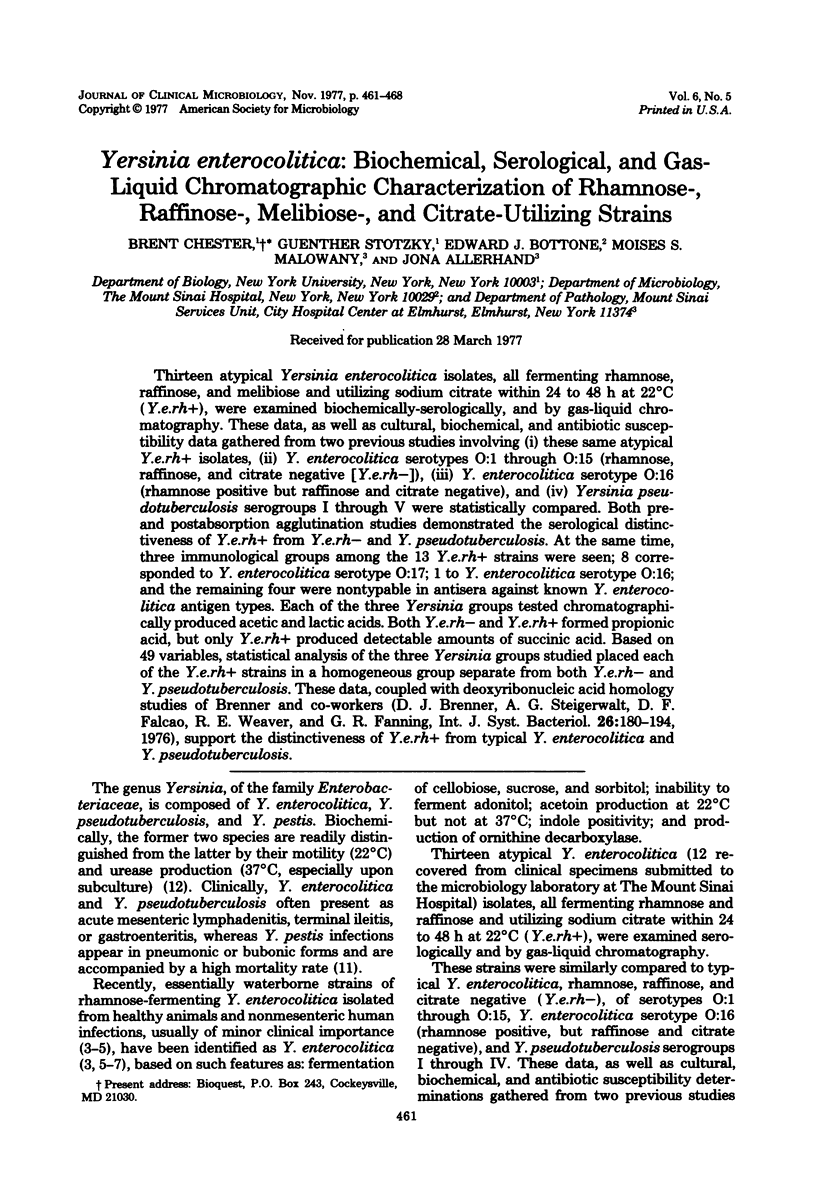
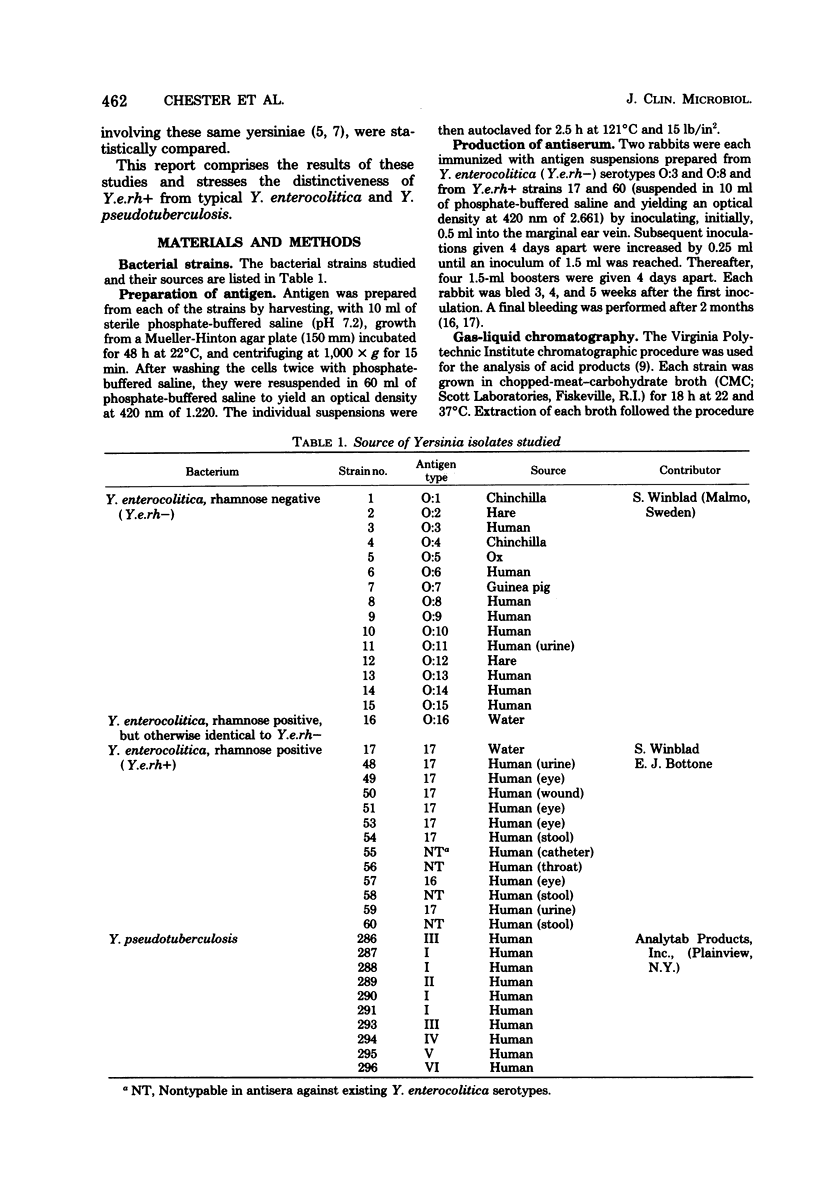
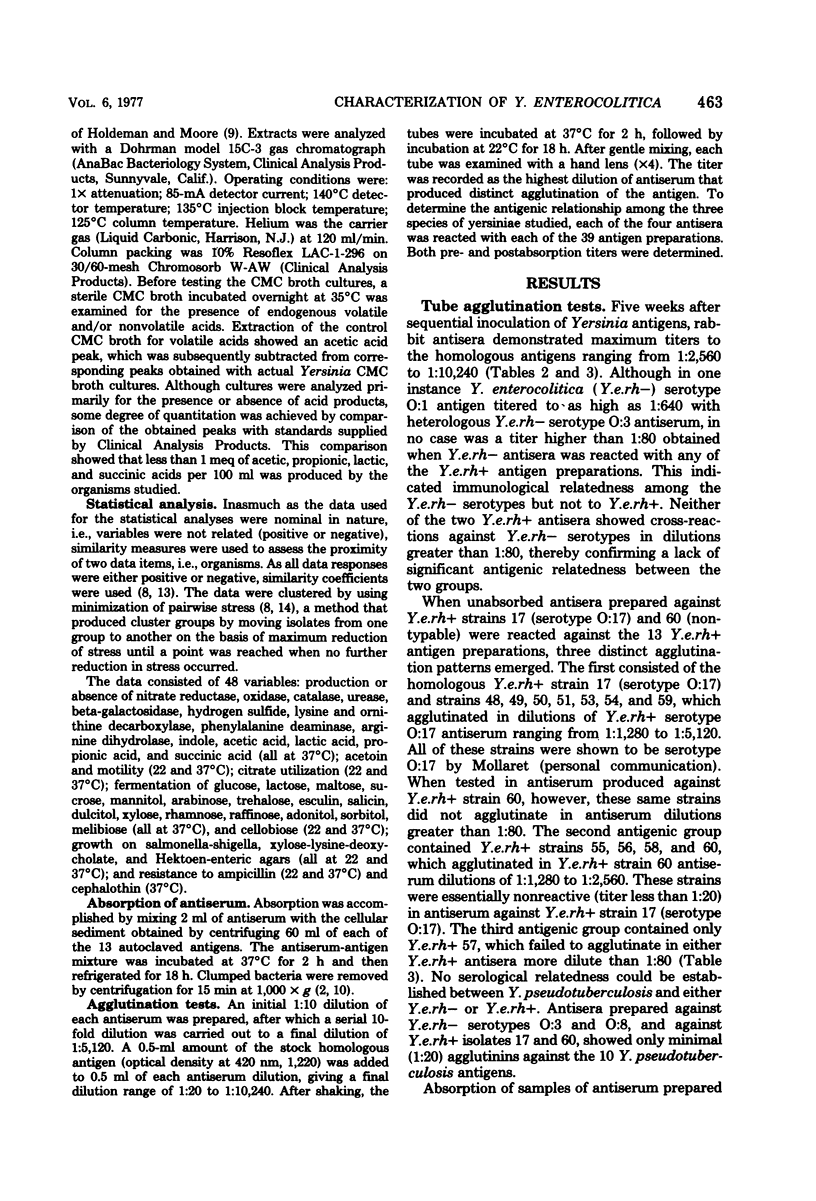
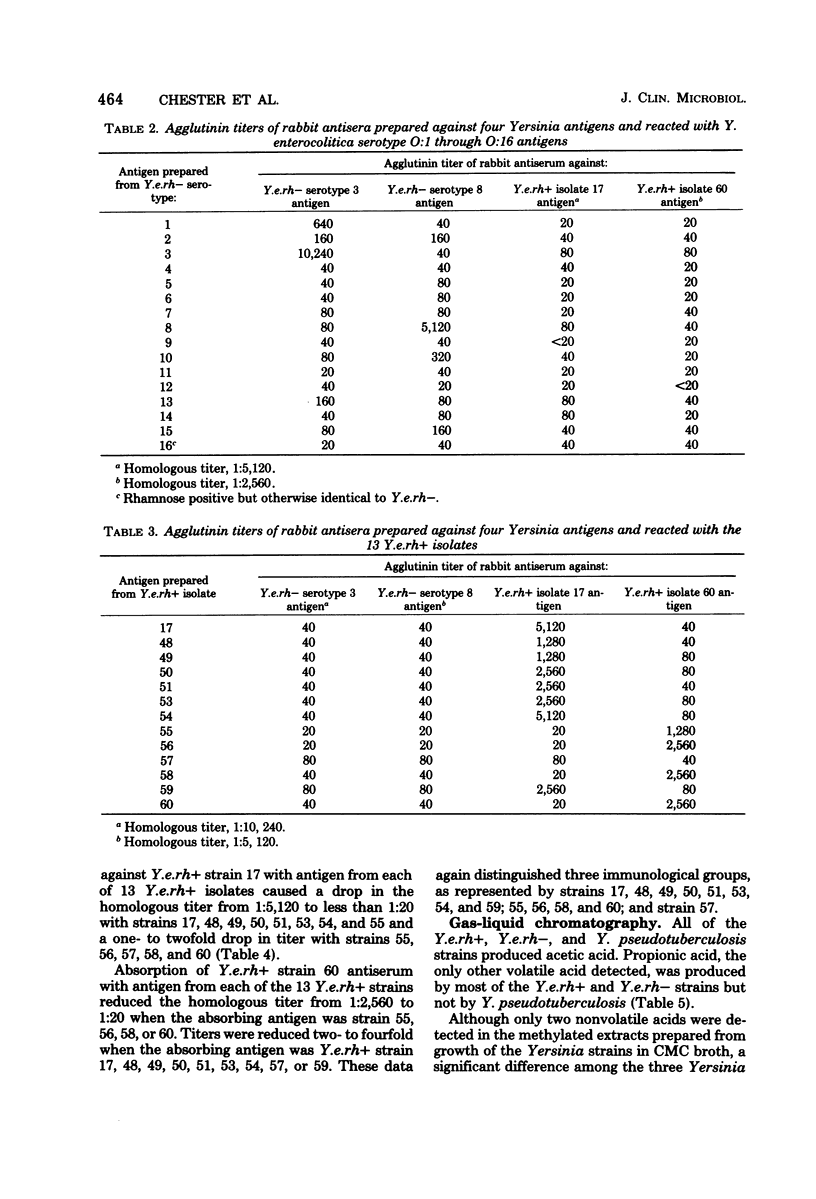
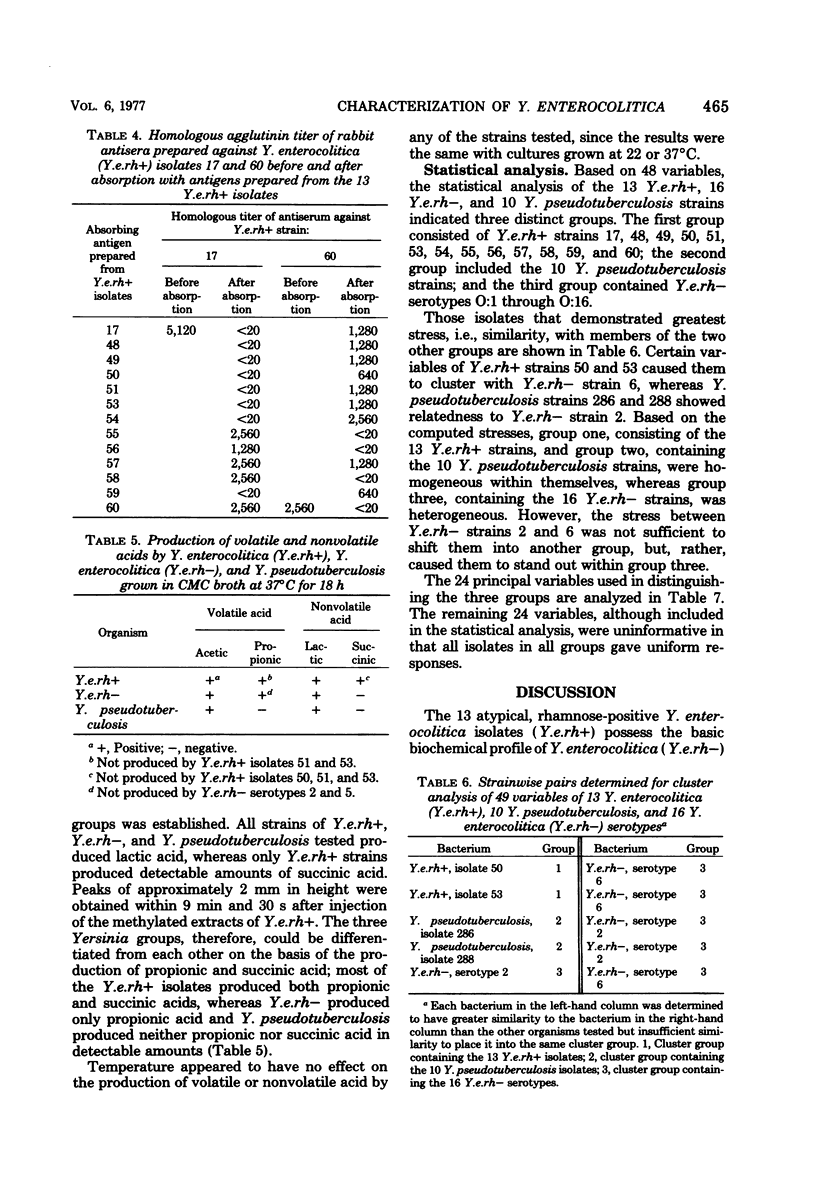
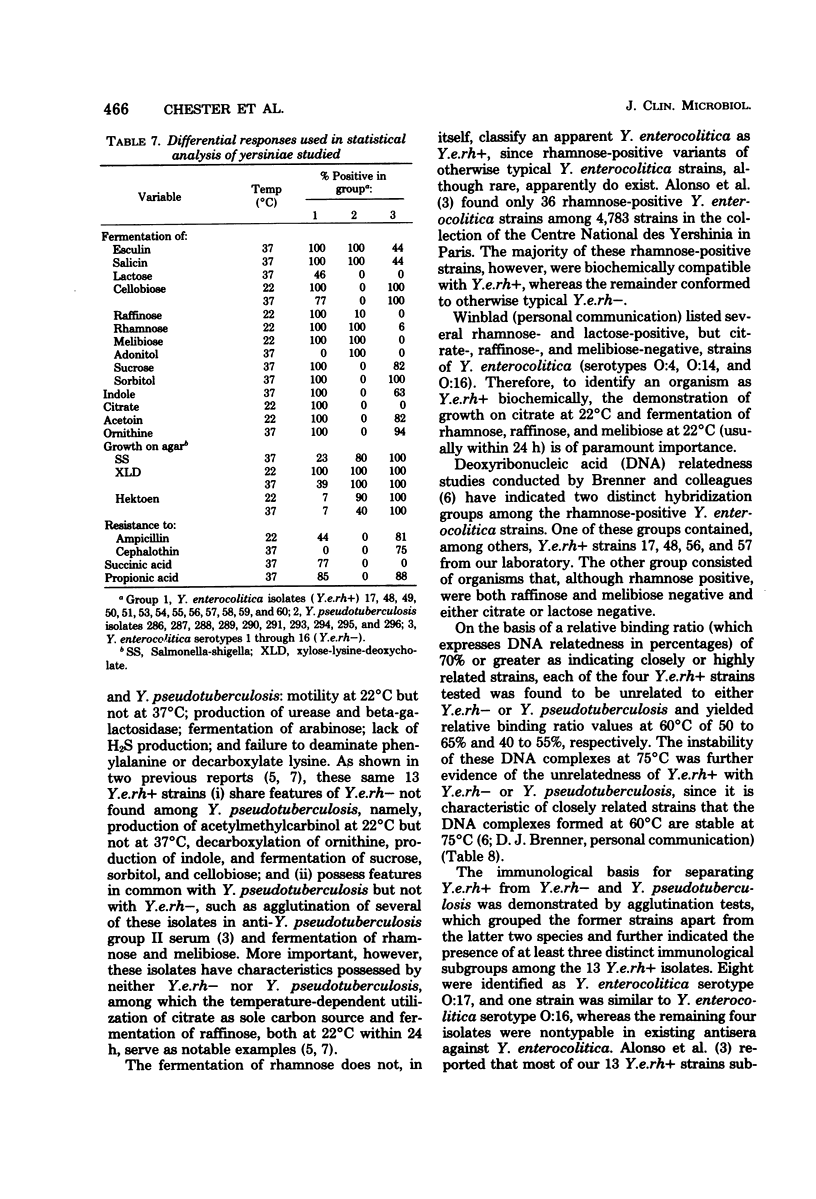

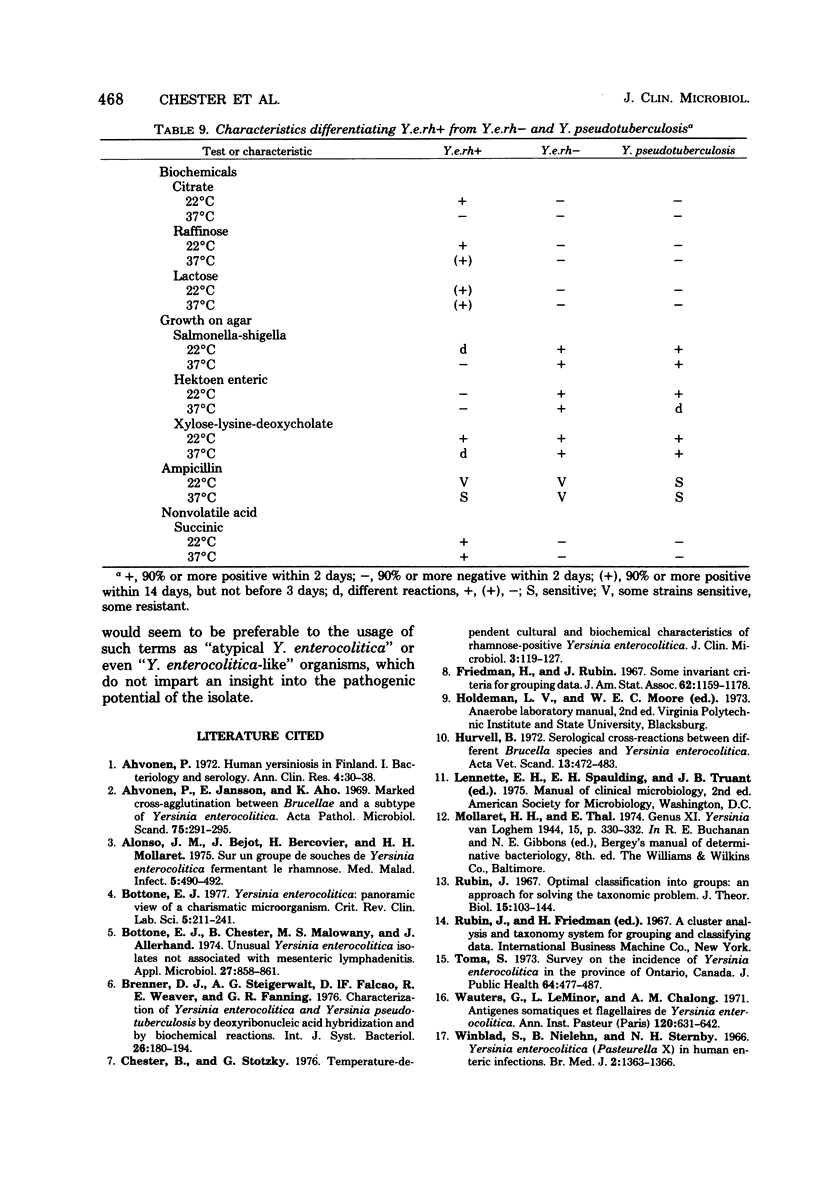
Selected References
These references are in PubMed. This may not be the complete list of references from this article.
- Ahvonen P. Human yersiniosis in Finland. I. Bacteriology and serology. Ann Clin Res. 1972 Feb;4(1):30–38. [PubMed] [Google Scholar]
- Ahvonen P., Jansson E., Aho K. Marked cross-agglutination between Brucellae and a subtype of Yersinia enterocolitica. Acta Pathol Microbiol Scand. 1969;75(2):291–295. [PubMed] [Google Scholar]
- Bottone E. J., Chester B., Malowany M. S., Allerhand J. Unusual Yersinia enterocolitica isolates not associated with mesenteric lymphadenitis. Appl Microbiol. 1974 May;27(5):858–861. doi: 10.1128/am.27.5.858-861.1974. [DOI] [PMC free article] [PubMed] [Google Scholar]
- Bottone E. J. Yersinia enterocolitica: a panoramic view of a charismatic microorganism. CRC Crit Rev Microbiol. 1977;5(2):211–241. doi: 10.3109/10408417709102312. [DOI] [PubMed] [Google Scholar]
- Chester B., Stotzky G. Temperature-dependent cultural and biochemical characteristics of rhamnose-positive Yersinia enterocolitica. J Clin Microbiol. 1976 Feb;3(2):119–127. doi: 10.1128/jcm.3.2.119-127.1976. [DOI] [PMC free article] [PubMed] [Google Scholar]
- Friedman M., Byers S. O., Brown A. E. Plasma lipid responses of rats and rabbits to an auditory stimulus. Am J Physiol. 1967 May;212(5):1174–1178. doi: 10.1152/ajplegacy.1967.212.5.1174. [DOI] [PubMed] [Google Scholar]
- Hurvell B. Serological cross-reactions between different Brucella species and Yersinia enterocolitica. Immunodiffusion and immunoelectrophoresis. Acta Vet Scand. 1972;13(4):472–483. doi: 10.1186/BF03547153. [DOI] [PMC free article] [PubMed] [Google Scholar]
- Rubin J. Optimal classification into groups: an approach for solving the taxonomy problem. J Theor Biol. 1967 Apr;15(1):103–144. doi: 10.1016/0022-5193(67)90046-x. [DOI] [PubMed] [Google Scholar]
- Toma S. Survey on the incidence of Yersinia enterocolitica in the province of Ontario. Can J Public Health. 1973 Sep-Oct;64(5):477–487. [PubMed] [Google Scholar]
- Wauters G., Le Minor L., Chalon A. M. Antigènes somatiques et flagellaires des Yersinia enterocolitica. Ann Inst Pasteur (Paris) 1971 May;120(5):631–642. [PubMed] [Google Scholar]
- Winblad S., Niléhn B., Sternby N. H. Yersinia enterocolitica (Pasteurella x) in human enteric infections. Br Med J. 1966 Dec 3;2(5526):1363–1366. doi: 10.1136/bmj.2.5526.1363. [DOI] [PMC free article] [PubMed] [Google Scholar]


